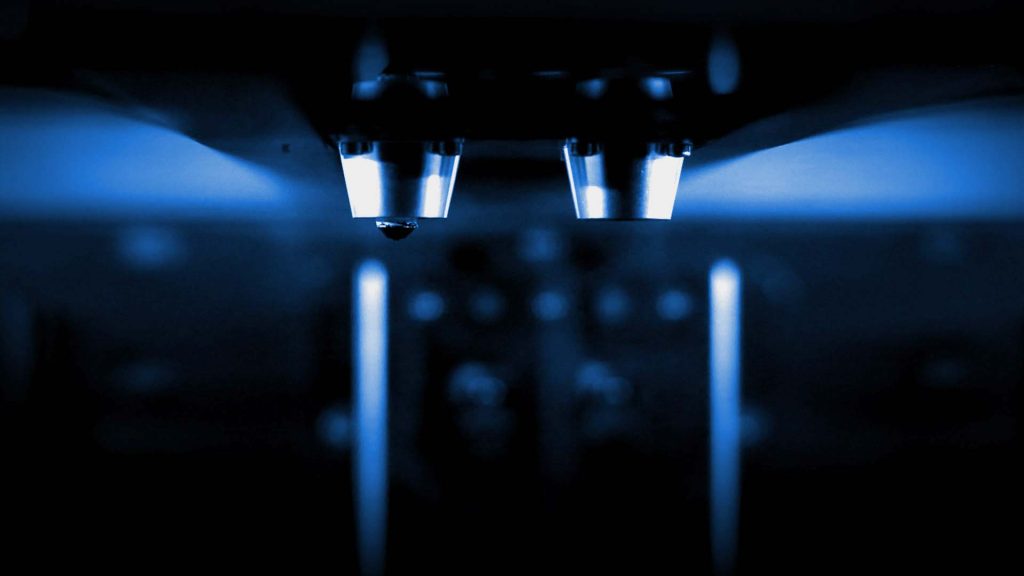Why AM is here to stay – Covid-related supply chain disruptions have delivered a hefty boost to the use of 3D printing to build end-use parts. Essentium CEO Blake Teipel talks us through survey results that suggest the momentum is set to continue
In recent years, manufacturing companies have been gently dipping their toes into unknown waters. They’ve got familiar with 3D printing technology and started to use it – but mostly to create prototypes, rather than final products.
That’s changing fast. An independent survey commissioned by Essentium reveals that, for almost nine out of ten manufacturing companies (86%), use of large-scale additive manufacturing (AM) has more than doubled in the past year.
The results suggest that AM is here to stay, having evolved beyond prototyping to become an essential component in the factory-floor, large-scale production of functional parts.
The number of companies that have shifted to using AM for full-scale production runs of hundreds of thousands of parts has increased to 24% in 2021, from just 14% in 2020. Of those companies that have adopted AM, only 1% use 3D printing for fewer than ten parts, compared to 17% four years ago.
Previously, AM wasn’t an option for manufacturing companies, because it could not scale to meet their needs. However, the AM world of today has the power to produce parts and products quickly, costeffectively, and at scale.
In the past two years, significant changes have encouraged the adoption of 3D printing for large-scale production. These include: growing expertise in 3D printing technology and processes (according to 47% of respondents); the improved business case for AM (42%); reductions in the cost of 3D printing materials (40%); and the improved scalability of 3D printing technology (39%).
A winning combination
The combination of generative design software and step-change improvements in 3D printing technology has led to the creation of next-generation tools for designers, unlocking exciting new capabilities when it comes to productdevelopment possibilities.
For instance, we recently saw a 16-rotor super-drone – basically, a flying car with vertical takeoff and landing – fully outfitted with 3D-printed parts. Without 3D printing, an innovation like this would not be possible.
3D printing will play a prominent role in keeping supply chains flowing and factory floors moving, too. Even in a crisis as severe as the COVID-19 pandemic, we’ve seen AM step in to make quantities of supplies at scale, or provide the mold to make the product to keep the assembly lines moving.
Our survey found that for 30% of respondents, overcoming supply chain issues was a critical driver of their company’s adoption of 3D printing for large-scale production.
Other key drivers included 3D printing’s ability to improve part performance (55%); increase design freedom (45%); and lower production costs (24%).
Additive manufacturing is here to stay, having evolved beyond prototyping to become an essential component in the factory-floor, large-scale production of functional parts
The next level
For industries like aerospace, certifying safety-critical airplane parts requires PhD-level engineering. Over the past few years, we have worked in an open ecosystem with the brightest minds in the industry and will continue to work collaboratively to certify printers and materials to ensure consistent replication that meets requirements as printer technology changes.
At Essentium, for example, we work closely with organisations such as the US Air Force and National Guard to hone 3D production processes, ensuring repeatability. In this way, we seek to remove any doubt about the quality of objects produced using additive and to enable 3D printing to shoulder a significant amount of manufacturing output.
The highly flexible nature of 3D printing will allow manufacturers to get a jump on rivals moving forward. The next generation of 3D printing innovation is poised for fast adoption as companies strive to cut lead times and respond quickly to customer needs.
In the next 7 years, the world of manufacturing and the products it creates will be completely transformed for the better.
The vast majority of respondents (96%) believe that the manufacturing industry could save billions of dollars in production costs as 3D printing technology matures.
However, as they think about futureproofing their investment in AM at scale, the critical strategic considerations include integration with existing machinery and work in practices and acquiring the necessary design-for-AM knowledge.
Outside of the design and engineering sphere, convincing finance teams and helping them to gain a deeper understanding of the cost and value implications of AM is instrumental for adoption.
Additive technology has matured to the point where manufacturers worldwide can digitally print parts as they need them at a speed and scale, and with economics that challenge traditional methods.
As AM moves to transform global manufacturing and enable more distributed and resilient value chains, it is important that vendors, customers and partners all work together to ensure they can reap the rewards of this new manufacturing era.
Get in touch:
Blake Teipel is CEO of Essentium, a company pioneering multiple 3D printing technologies to allow factory floors everywhere to be transformed.
Prior to Essentium, he worked in engineering roles at Caterpillar Global Work Tools and Services and John Deere Power Systems.






